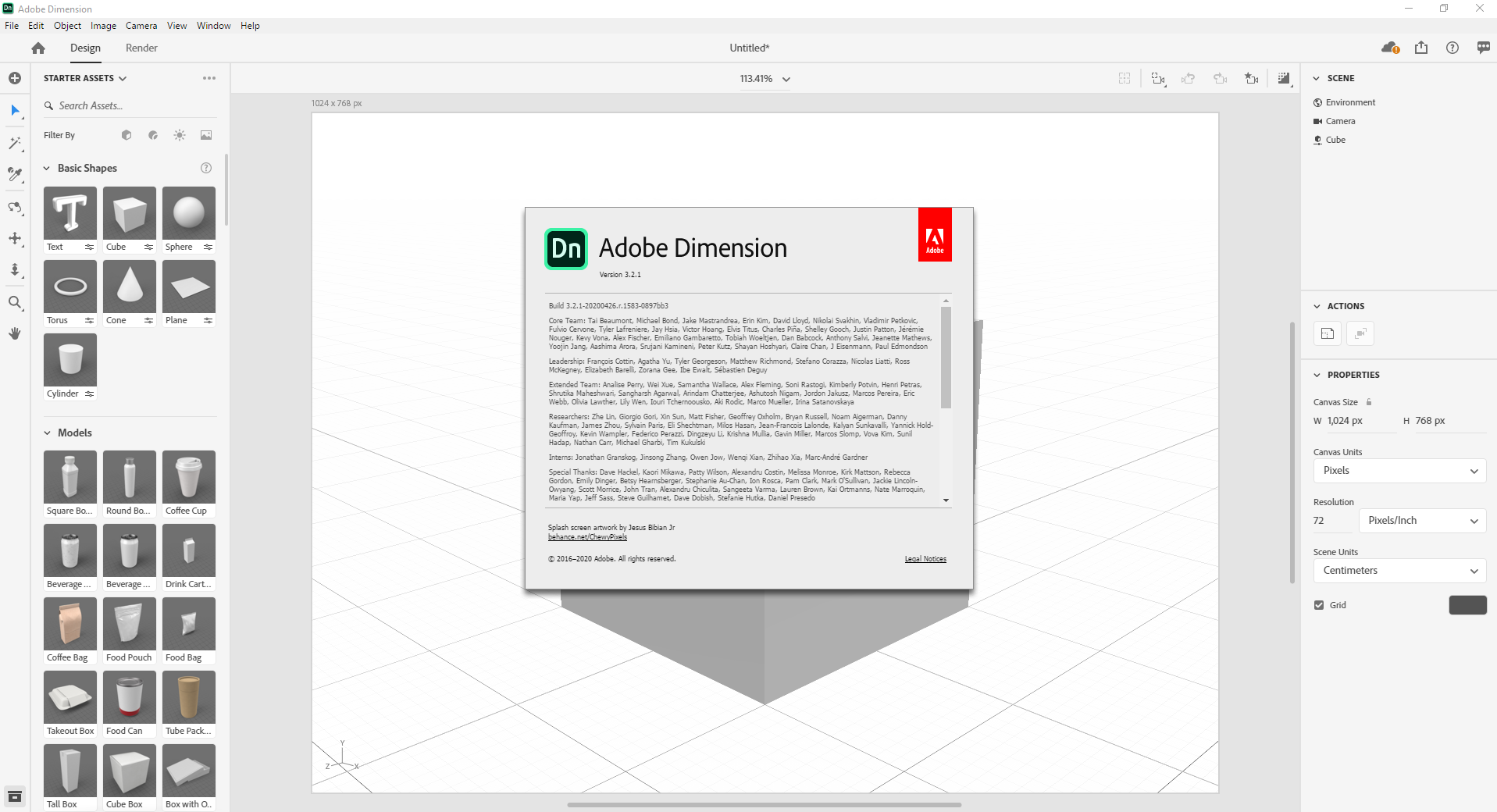
Text is an incredibly exciting addition to Dimension, and there’s a lot yet planned for this system! In the future we can imagine things like stackable text layers, randomized text, offsetting position per-glyph, and the ability to add effects like bend, all in a non-destructive system, meaning you can edit the text properties while preserving the style, bevel settings and materials. (UVs define a two-dimensional texture coordinate system that determines how an image gets mapped to a 3D surface). Dimension’s new text functionality also utilizes a geometry engine to generate clean UVs for the text, so materials and images are always applied without stretching or distortions. The front, back, sides, and edges of your 3D text, are all independent regions, so you can apply rich, realistic materials, or your own graphics, to each piece. In addition to the stylistic flexibility, expressive edge beveling of 3D objects allows you to further control how they catch the light, improving the legibility (and nuances) of the image. You can add simple chiseled, square, or rounded edges, as well as more complex convex curves and outlines.

The new text engine lets you easily express 3D text from your operating system’s fonts library and control the overall look and feel with a host of styling properties. Left image: “Do What You Want To Do” – 3D Typographic Artwork by Peter Tarka.
ADOBE DIMENSION PRODUCT MOCKUPS HOW TO
Initial prototype (right) around the multi-layer system: the team looked at existing 3D text artwork (left) and investigated how to simulate it and validate the prototype design. We built these new text features to extrude glyphs from 2D fonts, customize their properties such as spacing and depth, and apply further details such as bevels and materials. When we first started talking about introducing text into Dimension we knew we wanted to build it as a component within a system that could be expanded to be even more expressive over time. A dynamic 3D text system: Add text to designs or create 3D typography that stands alone in Dimension

Check out the inspirational brand identity piece above (right) for Lenovo, by Peter Tarka, which shows the Lenovo brand highlighted in a different way than traditional technology design. This trend is really taking off, with even big brands getting on board. sometimes called “abstract 3D,” “3D illustration,” or “primitive art.” This is a form of 3D design that focuses on combining simple shapes, more complex 3D models, and the rich materials and lighting you get when working in 3D to create graphics.Įxamples of the “abstract 3D” trend: left image created in Dimension by Khati Trehan, middle image made with Dimension and Blender by Matti Tauslahti, right image made with Cinema4D by Peter Tarka. Meanwhile, to see some of the interesting things designers are creating with shapes, just look at the relatively new trend of 3D design. When looking at the use of text in both 2D and 3D design, we found some consistent themes throughout our research: effects like bevels, outlines, and edge treatments are frequently used techniques by designers, as is layering the text in alongside more complex 3D assets. From left to right: Wes L Cock, Sascha Tcherniakow, David McLeod. With 3D text, we started by taking a close look at what designers are doing now we poured through Behance galleries, talked to designers from lots of backgrounds, and investigated text systems in other tools.Įxamples of 3D Text trend used by the team for research – artwork not created in Dimension. Type and shapes (along with line, color, texture, and composition) are essential elements of graphic design, regardless of whether it is 2D or 3D.


Trends in graphic design: 3D typography and creative geometric compositions Dimension’s new Customizable Basic Shapes: make bespoke geometries out of cubes, planes, spheres, cones, tori, and cylinders – without stretching their textures and materials. With the ability to create text and customize basic shapes right in Dimension, you can take your designs further with the power of 3D: adding rich lighting, materials, reflections, depth, background scenes, and variations in camera views, and more. From graphic design, typography, and art to signage and wayfinding, text and shapes can be used in a thousand ways to enhance your creation capabilities in building scenes or complex forms.ĭimension has always been a natural extension of your other Creative Cloud tools, enabling you to easily visualize 2D imagery, made in Adobe Illustrator or Photoshop, in spectacular 3D. We know it’s the fundamentals that are the most important for your creative workflows, so we’re excited to reveal that the latest release of Dimension brings both text and customizable 3D geometric shapes into your toolkit. This article is brought to you by our friends at Adobe Dimension A design made with Dimension’s new 3D Text feature.


 0 kommentar(er)
0 kommentar(er)
